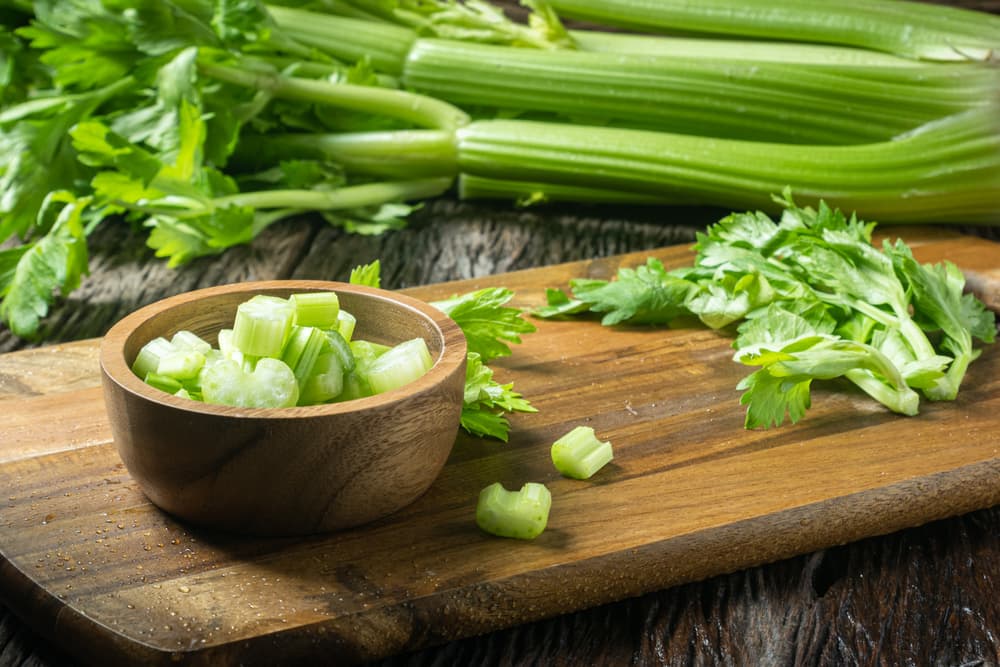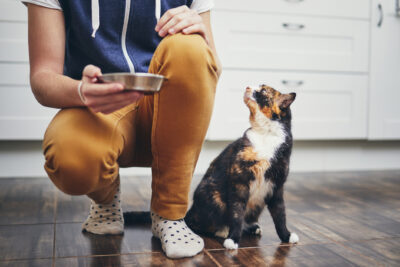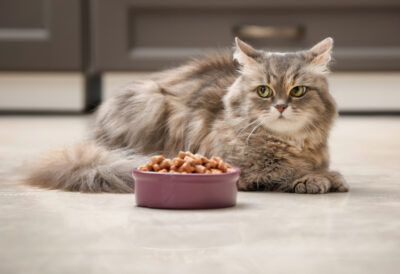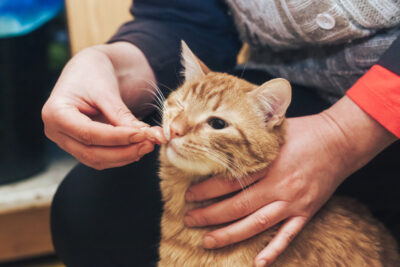Can Cats Eat Celery?

Celery has always been touted as a nutritious health food. The green, leafy stalks are packed with vitamins and minerals, as well as antioxidants. And its satisfying crunch makes it a great, guilt-free, low-calorie snacking option. Although celery is considered safe for humans, cats are quite different from us. Can cats eat celery? And the real question: Should cats eat celery?
Is it OK for Cats to Eat Celery?

Yes, cats can eat celery! However, celery cannot replace a well-balanced diet. Pet parents should consider celery an additional treat rather than a significant part of a cat’s routine diet. As obligate carnivores, meat-based diets for cats are a must. Without meat and a whole host of vitamins and minerals in the correct proportions, cats can become seriously ill.
But as long as you serve up celery in the correct proportion to a nutritionally balanced diet, it’s fine to share this veggie with your cat.
Celery grows in marshlands all over the world in the form of a long narrow stalk that tapers into leaves. From this comes a narrow stem that flowers and produces seeds. These small, fragrant celery seeds are used as a cooking spice as well as a component of Eastern medicine. People tend to eat the stalk, leaves, and seeds—essentially the entire plant, minus the roots.
Is Celery Good for Cats?

Celery in moderation is good for cats. For one, it contains compounds called apigenin and luteolin—antioxidants that lower inflammation (1) and are used frequently in Eastern medicine. The compounds in celery have been suggested as a possible treatment for cancer, based on how they interact with cells (2, 3).
Celery seeds and extracts are natural diuretics—a substance that helps flush salt and chloride from the body in the form of urine. Excessive amounts of celery could potentially lead to dehydration in cats, albeit a very mild case. This diuretic property is often used in a beneficial way, however. In rats, celery extracts reduced high blood pressure (4).
Celery has also been shown to decrease cholesterol and triglycerides in rats (5). In vitro studies have shown that celery extract can regrow nerve cells (6). Celery is also high in fiber, which helps regulate the production of feces and promotes regularity. Higher fiber intake helps cats feel full.

Many cats demonstrate a preference for certain textures or shapes that are fun to chew on. In fact, some cats become obsessed with chewing on things like wooden furniture! Celery is an excellent enrichment tool. Its crunchy, wood-like texture makes it a fun chew toy of sorts for cats. You could even hang it from the ceiling on a string to provide your favorite feline with a moving target to practice pouncing upon.
Celery is not common in commercially sold cat food diets or treats. It is primarily composed of water and, secondarily, fiber, which makes it a difficult ingredient to incorporate. You may find it as an ingredient in recipes for homemade cat food posted online. However, always check with your veterinarian before whipping up any homemade cat food recipe. Unless the recipe has been thoroughly vetted by a veterinary nutritionist or prescribed by your veterinarian, there’s no way to confirm that it is nutritionally complete and balanced.
Is Celery Bad for Cats?

In some cases, celery can be harmful to your cat. If your cat ingests a large quantity of celery stalks or leaves, they could suffer an upset stomach, vomiting, or diarrhea. While having high fiber content is beneficial, it can also be difficult to digest.
Celery may also be cross-reactive with certain allergens. If your cat is allergic to things in the environment such as mugwort or other grasses, they may also be allergic to celery.
Celery and Cats: Feeding Tips

On average, only 10 percent of your cat’s daily diet (at most) should come from sources outside of their nutritionally-balanced cat food. With that in mind, about 1 tablespoon of celery per day would be considered a suitable serving.
When you are serving up celery as a special treat, you can leave it as a whole chunk or dice it up, depending on your cat’s preference. If you are offering celery as an enriching play option, leave it as a whole stalk for your cat to grab and chew.

Celery juice is not harmful to cats in small quantities. There are no specific guidelines about how much celery juice is too much for cats to drink, but pet parents should not offer more than about a tablespoon per day. As a natural diuretic, celery juice can trigger your cat to lose extra fluids. But as long as your cat has plenty of fresh water available at all times, they should be fine.
Celery seeds are sometimes used therapeutically in Eastern medicine. Before giving your cat any herbal supplement, you should consult your veterinarian. Some herbal supplements contain high doses of compounds that may be harmful to your cat, depending on their medical history and conditions.
As long as you follow these guidelines, you should be able to share the crunchy, yummy benefits of celery safely with your cat.









